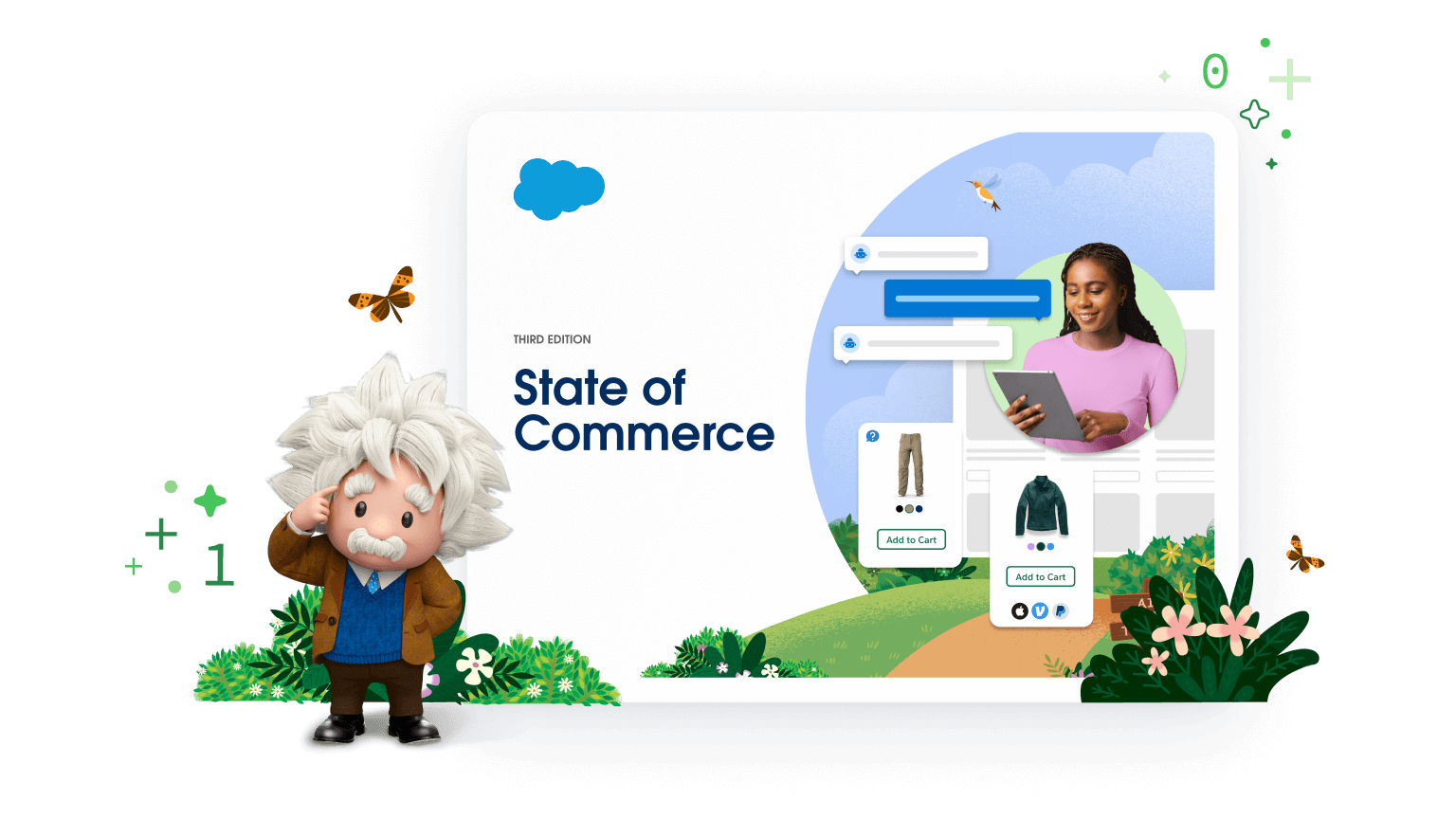Picture this: Your ecommerce website is up and running, and traffic is flowing in. Shoppers are finding you through your social channels, search engines, and paid media campaigns. The challenge? You need to convert all those visitors into paying customers. That’s where conversion rate optimization (CRO) comes in.
CRO is how you increase the percentage of users who perform a desired action on your website (typically, the desired action is a purchase). No matter how many visitors you attract to your digital storefront, website traffic is only half the battle. With the right CRO strategies, you can create engaging customer experiences, earn loyalty, and increase your revenue.
What you’ll learn:
What is a conversion rate?
How do you calculate a conversion rate?
What’s the average conversion rate?
Your conversion rate might not tell the whole story — look for context
Where to start if you want to improve your ecommerce conversion rate
Checkout and payment are crucial to your CRO strategy
Ecommerce conversion rate optimization tips
Five steps for a successful CRO strategy
What is a conversion rate?
An ecommerce conversion rate is the percentage of your website visitors who take a desired action on a given page, such as completing a form, signing up for a service, or making a purchase. For example, when a shopper visits a product listing page, you want them to add items to their cart. When a customer subsequently views their cart, the desired action is a purchase. Tracking your conversion rate across different pages on your site will help you gauge your success, discover where to make improvements, and better understand what resonates with your shoppers.
A high conversion rate indicates that your ecommerce website is well-designed, effectively formatted, and appealing to your target audience. On the flip side, a low conversion rate could mean that you need to optimize your content, design, code, or more. Common reasons for a subpar conversion rate include slow load times, clunky checkout experiences, and complicated site navigation.
Resources for Conversion Rate Optimization
How do you calculate a conversion rate?
To calculate your conversion rate, divide the number of conversions (or the desired action on a specific page) by the total number of visitors to that page. For example, let’s say you’re a retailer that sells outerwear. If a product page for a specific jacket gets 1,000 visitors during the course of a month, and 50 customers added the jacket to their cart, your product page has a conversion rate of 5%. The higher your conversion rate, the more successful your page.
What’s the average conversion rate? (Hint: it depends)
The average ecommerce conversion rate across all industries hovers around 2%. However, conversion rates vary by industry — and there are also other factors to consider. For example, rates may differ depending on which channel a shopper uses, the price range of particular products, and even seasonality.
It can also depend on what marketing objective you want to achieve. Clothing or food items might have a much higher conversion rate because the cost is lower and shoppers are usually interested in purchasing right away. These are low-risk purchases. However, a luxury item or high-end product may have a lower conversion rate because potential customers need more time to research and weigh their options before making a decision.
Not all products and services are created equal, and that’s why it’s important to look at the big picture when you strategize for conversion rate optimization.
Your conversion rate might not tell the whole story — look for context
Business decisions should always be backed by data, so it’s critical to know your ecommerce conversion rate. However, it’s also important to dig into the numbers and understand them from all angles. For example, you might have a very high conversion rate for a specific product page, but that same item might also have a high return rate. This could mean that the product page doesn’t accurately reflect the item’s features (which could also mean frustrated customers).
It’s important to look at your conversion rate from all angles to determine the best way to improve it. Other ecommerce metrics to take into account when you develop a strategy for conversion rate optimization include:
- Return rate: Determine which of your products have the highest and lowest return rates, then investigate why. Use your findings from your “stickiest” products (the least returned ones) to come up with a strategy to address higher return rates. Do you need to adjust your product detail pages? You can also consider sending automated emails to customers after they purchase items with high return rates to get ahead of any issues and offer proactive support.
- Cart abandonment rate: If shoppers add items to their carts, but don’t ever complete the purchase, take a deeper look to learn why. Are your shipping and delivery rates too high? Is the payment experience clunky?
- Promotions: Sometimes low conversion rates can be remedied with promotional strategies. If it’s the price that deters shoppers from making a purchase, perform a test to see if lowering the cost encourages more purchases. You can also use AI-powered product recommendations to suggest items with low conversion rates to help give them a boost.
Where to start if you want to improve your ecommerce conversion rate
Conversion rate optimization requires a constant and dedicated effort. Here are some commerce and marketing strategies you can implement on specific web pages and sections of your ecommerce site.
- Homepage: Your homepage is crucial to success — it’s often the first impression a shopper gets of your brand. To garner conversions, you want it to be informative, engaging, and easy to navigate. Make sure relevant, high-value promotions are clearly visible above the fold (this means that a shopper should be able to see them immediately, without the need to scroll down the page). Curate your best-selling products with high-quality images and content. “Add to cart” buttons should be clearly visible, along with pricing and other important product details.
- Landing pages: Landing pages are standalone web pages created specifically for a marketing or advertising campaign. When a visitor arrives at a landing page, they’ve most likely clicked on an advertisement for a specific product, category, or special promotion. Make sure there’s a throughline between advertisements and the landing page itself. Use similar language and imagery to make the journey feel cohesive. For example, if a visitor clicked on a digital ad with a headline that reads “20% Off Winter Coats”, the landing page should clearly articulate the same offer. Make sure “Add to cart” and “Buy now” buttons are prominent. Don’t forget to A/B test your landing pages to see what resonates most with customers.
- Product detail pages: These pages are where most customers make their purchase decisions. One way to convince them to add to cart? The right pricing and messaging strategies. If products are priced higher compared to your competitors without offering additional value or unique selling points, customers may choose to shop elsewhere.
Keep the Buy button highly visible, along with any pertinent offers and current promotions. It’s also important to highlight customer reviews to build credibility and encourage purchases. Showcasing real customer stories is an authentic way to boost trust. In fact, 70% of online shoppers read between one and six customer reviews before making a purchasing decision
Checkout and payment are crucial to your CRO strategy
When your potential customers arrive at checkout and payment pages, they’re at the final stage of the sales funnel. Don’t let an overly complicated purchasing process spoil the deal. Nearly half of customers (48%) will abandon during checkout due to extra costs being too high. About a quarter of consumers won’t follow through with a purchase due to slow delivery, a complicated checkout process, or an ecommerce website that seems untrustworthy. Shoppers will also abandon a purchase if the right payment methods aren’t available.

Do whatever you can to minimize the number of steps to purchase. This includes implementing one-page or one-click checkout, and offering guest checkout for first-time customers who don’t want to create a new account. It’s also critical to be transparent and upfront about shipping costs and taxes.
Ecommerce conversion rate optimization tips
Although some CRO strategies are designed for specific parts of your website, there are best practices that can be applied across the board. If you’re looking to improve your ecommerce conversion rate, try implementing the following:
- Implement AI and automation: New ways to use AI in ecommerce are cropping up all the time — and many of them can have a positive impact on conversion rate. For example, businesses can use generative page designers to create highly personalized, relevant webpages in seconds. For product detail pages, you can leverage generative AI to write dynamic product descriptions that highlight the right product features and details for specific customers. When a shopper leaves your website without finalizing a purchase, AI can send auto-generated custom offers via email, SMS, and messaging apps to sweeten the deal and drive conversions.
- Focus on merchandising: Make sure it’s easy to find products on your site, and that your products are displayed in a way that’s visually appealing. Successful ecommerce merchandising includes intuitive product categories and search filters that are easily applied for price and product features.
- Remind shoppers of their abandoned carts: Some shopping sessions get interrupted before checkout. Maybe the doorbell rang or it was time to sit down for dinner right after a customer added a few items to their cart. That’s where personalized, automated messaging comes in. Use automated abandoned cart messaging to gently remind shoppers of the beloved items they left behind. You can even sweeten the deal by offering an enticing discount to get a customer to complete their purchase.
- Prioritize user experience: Form and function are equally important when it comes to ecommerce conversion rates. Test your website and keep page loading times fast, especially for mobile. About half (53%) of shoppers will abandon a mobile web page if it loads too slowly (more than 2 seconds). Make sure that customers can scroll smoothly when browsing category pages and can navigate back and forth with ease.
- Optimize your pricing: Create a pricing strategy that allows your brand to offer free shipping. You may need to set a minimum order limit or set a longer delivery window, but most shoppers prefer free shipping over fast shipping, with only 28% of them willing to pay for faster delivery. Free returns are also a powerful motivator and can put shoppers at ease when they decide to buy from your site. You can also reward customers for referrals by asking them who referred them and offering those shoppers a discount.
Five steps for a successful CRO strategy
Implementing an ecommerce conversion rate optimization strategy is essential to measuring and improving your online sales. Just follow these steps to stay on track:
Step 1: Collect data from customer interactions
The first step in developing a good CRO strategy is understanding what drives people to your website and motivates them to purchase — and what doesn’t. This involves collecting the right types of transactional, demographic, and behavioral data. For example, you can start by identifying which products are left abandoned in carts most often, and at what point during the shopping experience customers leave. This will help you home in on what to optimize to increase conversion rates.
You can also view data from your commerce platform to determine your best and worst selling product categories, price ranges, and more. If your commerce team has access to marketing and sales data, merchandisers can leverage campaign performance and insights to determine the right promotional strategies on your website.
Step 2: Organize your data into an action plan
Once you’ve gathered the data, define your top personas and what they need from your website. User personas are realistic representations of your visitors that help you better understand your target audience. Use the survey responses to identify the demographic that matters most to your business and determine what drives them to buy. By organizing this information into a list of the main things people want to accomplish through your website, you can gain a clearer picture of your audience’s needs and preferences.
Create an action plan with your top three drivers and personas. This will help you align your website’s content and messaging with what resonates most with your target audience. Remember, understanding what drives people to your website is crucial for optimizing your conversion rate and creating a user experience that meets their needs.
Step 3: Identify areas of improvement on your site
Focus on identifying the barriers that might be stopping potential customers from converting on your website by understanding where and why visitors are leaving your site. Identify your high-exit pages, which are the pages where you lose the most visitors. To do this, you can build a conversion funnel using a tool like Google Analytics. By tracking users’ journeys from one page to the next, you can pinpoint where you’re losing them along the way. For example, in an e-commerce site, the funnel might include the homepage, product pages, cart, checkout, and thank you page.
Observe how people interact with your website by setting up session recordings to capture visitors’ browsing behavior, clicks, and scrolling. By filtering and analyzing these recordings, you’ll be able to pinpoint the issues or obstacles visitors encounter. Look for signs of hesitation, loading issues, content visibility issues, button interactions, and any potential bugs or broken elements. The data will help you understand the user experience and help guide your optimization efforts.
Step 4: Collect and analyze customer feedback
Sifting through data from your commerce and marketing platforms is valuable, but don’t forget to take customer reviews into account. These are a treasure trove of information when it comes to the quality of your user experience, product quality, and more. Pro tip: You can use generative AI to uncover trends and gain insights by looking for patterns like repeated phrases, items mentioned, and more.
You can also take a proactive approach and set up a post-purchase survey that appears on the order confirmation page. Ask questions like, “How would you rate your overall experience?”, “What could have been better?”, and “How can we improve your experience next time?” After collecting the survey responses, analyze the data to identify the top reasons visitors are abandoning your website. You can also calculate an average score for the overall experience and review the answers to the other questions to gain insights into what persuades or hinders conversions.
Step 5: Learn to love the CRO process
Conversion rate optimization isn’t a “set it and forget it” objective. You need to be in it for the long haul and be prepared to continuously make adjustments as you better understand your customers. Once you have gathered insights from surveys and on-demand feedback, create an action plan with the top pain points customers are facing. 65% of online customers expect companies to tailor offerings to their needs and preferences. Focus on the easiest-to-implement and most impactful solutions first to drive positive results. This will prevent you from feeling overwhelmed and keep your CRO strategy on track.
Ready to improve your CRO?
CRO is a process that demands consistent effort and refinements. Don’t worry, your proficiency, speed, and skills will increase with time, but it’s important to remain dedicated to exploring and expanding your CRO knowledge. By adhering to the fundamental principles outlined in this guide, and investing in a customer relationship platform that lets you connect with your customers at every touchpoint, you can continuously leverage CRO to drive sales and conversions for your online business.
See how YETI increased mobile conversion rates by 63%
Learn how customizable technology and the right storefront strategy can propel business forward in a big way.

































